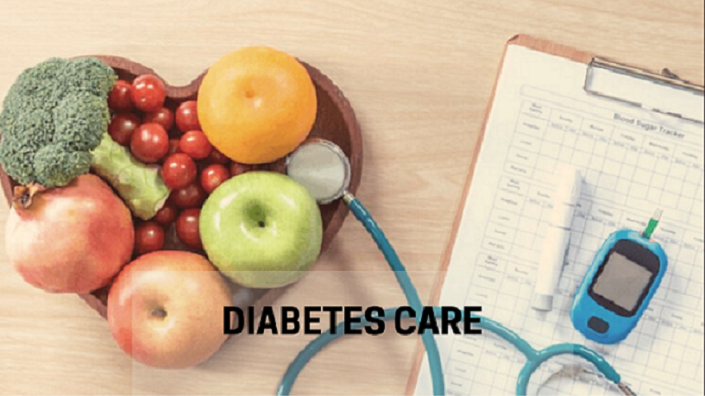
Diabetes Care | The Most Typical Code of Population In the World: Diabetes increases the risk of severe and fatal complications such as heart attack, stroke, blindness, kidney disease, and nerve damage. However, the condition’s drug therapies are inexpensive and have been shown to reduce morbidity and mortality.
However, health systems in poor and middle-income nations are frequently unable to diagnose the illness and administer these medicines. As a result, it invariably results in unnecessary pain and many deaths that death could have avoided. The scope of this problem is quantified in a recent study conducted by doctors of Ann Arbor and Brigham University and Boston Women’s Hospital, MA, at Michigan University.

The researchers used data from low- and middle-income countries’ standardized household surveys, including diabetes blood test results and self-reported treatments. Diabetes is on the rise everywhere, in every country, with 80 percent of diabetics living in low- and middle-income countries. Comprehensive diabetes care can prevent these problems, and we must ensure that people worldwide have access to it.
Key Highlights of Diabetes Care
According to a study in 55 low- and middle-income countries, many people with diabetes were unaware of the disease.
- Overall, just about 5% of people received adequate drug treatment and lifestyle guidance.
- The researcher includes data from nationally representative surveys. Respondents ask what therapies they were doing to lower blood sugar, blood pressure, and cholesterol levels and what diet, exercise, and weight-loss advice they had received.
- Diabetes drugs are inexpensive and have been shown to minimize the risk of diabetes-related complications as well as long-term healthcare expenses.
Treatment For Elevated Cholesterol is Lacking
A total of 680,102 persons in 55 low and medium-income countries survey in the household surveys.
Thirty-seven thousand ninety-four of these people had diabetes, according to blood testing. Only 43.9 percent of them, however, stated they had gotten a diagnosis. There was potential for improvement in terms of medication treatments even among individuals who had a formal diagnosis. For example, only 9% of those who knew they had diabetes took a statin to lower their cholesterol. While 85 percent and 57 percent of those who know they have diabetes was taking drugs from respectively, only 9% were taking a statin to lower their cholesterol. Higher-income countries tend to have better coverage for all diabetes treatments.
Latin America and the Caribbean had the best coverage, while Oceania (Pacific islands) and Sub-Saharan Africa had the worst.
COVID-19 Has Two-Way Links.
Minimize their blog diabetes and obesity make people more likely to develop severe COVID-19 infections, and researchers believe COVID-19 may trigger diabetes. The COVID-19 pandemic has stressed the relevance and broad implications of ensuring that all diabetes individuals access much-needed services. The cross-section of diabetes and infectious diseases
Self Monitoring For Diabetes Care
Glycated hemoglobin and blood glucose levels are two critical indicators of diabetes control. A doctor’s office requires a blood test to measure glycated hemoglobin, but blood glucose can be measured at home. Doctors recommend that users of insulin monitor their levels of glucose. The frequency with which these checks should perform varies from person to person, but doctors usually recommend checking levels before and after meals, before bed, and before exercising. People with diabetes who do not use insulin should monitor their blood sugar levels as well. Self-monitoring blood sugar levels can provide information about the effects of dietary changes, physical activity, and medication. A blood glucose meter can use to measure a person’s blood sugar level at any time.
Continuous glucose monitoring systems are also available, which provide real-time data on blood sugar levels. Every 5 minutes, they measure automatically with a small sensor under the skin. This kind of technology can improve health outcomes when it is used correctly.
At-home blood sugar readings can use by a healthcare team to modify medication, nutrition, and self-management plans.
Keep a Healthy Weight
People with diabetes or prediabetes must work hard to achieve and maintain a healthy weight. However, when doctors closely monitor a person’s weight loss progress, they are more likely to reach their goals.
According to research, modest, consistent weight loss in overweight people can help manage type 2 diabetes. Also, slow the rate at which prediabetes progresses to diabetes. They also discovered that making dietary changes can reduce glycated hemoglobin levels by 0.3 to 2% in adults with type 2 diabetes. Nutrition therapy can also improve one’s quality of life.
Hence American Diabetes Association recommends consulting a registered dietitian with diabetes and weight management expertise to help with these lifestyle changes.
Consume Nutritious Foods
The foremost difficult step in diabetes is self-management is sticking to a meal plan. Creating a project with a registered dietitian who is knowledgeable about diabetes nutrition can be beneficial. Some people find that dietary changes alone are insufficient to control their blood sugar levels. Diabetes is a chronic disease that can worsen over time. To achieve blood sugar targets, the ADA recommends a combination of medication and nutrition therapy. Meal planning is based on portion control and a preference for healthy foods. The diabetes plate method is one tool for assisting people in controlling their calorie and carbohydrate intake.
Exercise Regularly
Risk reduction demonstrated exercise control of blood sugar, cardiovascular risk reduction, weight loss, and overall well-being in studies.
In one study, the average glycated hemoglobin levels reduced by 0,66 percent in type 2; therefore, participants during a structured practice program for at least eight weeks. Thus, diabetes healthcare team members can help develop and customize a safe and effective workout plan.
It is critical to avoid long periods of sitting in addition to regular exercise. Sedentary periods can help control blood sugar every 30 minutes.
Also read :